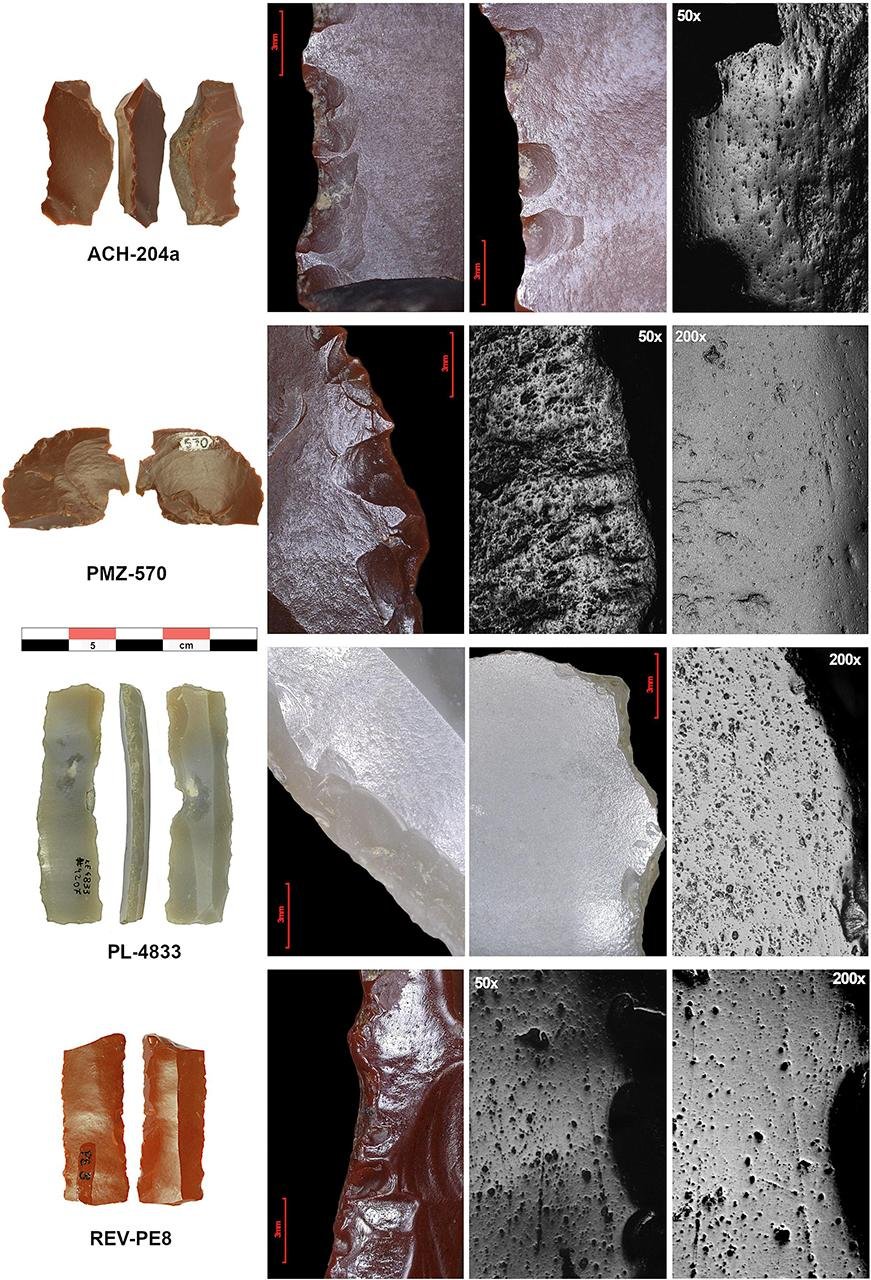A recent study led by the University of Pisa has revealed revolutionary findings about the origins of agricultural technology in Europe.
 Details of a threshing sledge. Credit: University of Pisa
Details of a threshing sledge. Credit: University of Pisa
Through advanced analytical methods, researchers have discovered that threshing sledges, an essential tool in separating grain from straw, were used in Greece as early as 6500 BCE, significantly earlier than previously believed. This study pushes back the known use of this technology by at least 3,000 years.
The research was conducted by an international team, including collaborators from the Spanish National Research Council (CSIC) and Aristotle University of Thessaloniki, under the funding of the European Union, Italy, and Spain. Their findings have been published in the latest issue of the Journal of Archaeological Science: Reports.
The threshing sledge, also known by its Roman name “tribulum,” was a pivotal agricultural innovation that greatly increased the efficiency of grain processing. Until a few decades ago, this tool was still in use across many Mediterranean countries, from Turkey to Spain. However, it was traditionally believed that the adoption of the threshing sledge coincided with the rise of the first states. This new study challenges that timeline, showing its use long before the formation of complex societies.
 Potential threshing sledges identified based on macroscopic and microscopic wear patterns. Credit: N. Mazzucco et al. Journal of Archaeological Science: Reports (2024)
Potential threshing sledges identified based on macroscopic and microscopic wear patterns. Credit: N. Mazzucco et al. Journal of Archaeological Science: Reports (2024)
By applying confocal microscopy to flint industries from Early and Middle Neolithic sites such as Achilleion, Platia Magoula Zarkou, Revenia Korinos, and Paliambela Kolindros, the researchers identified macro- and microscopic use-wear traces similar to those found on ethnographic and archaeological threshing sledges. This method enabled them to pinpoint the early adoption of these agricultural machines.
“For years, we have been working to reconstruct the paths and mechanisms of the spread of agriculture from the Near East to the rest of the Mediterranean,” explained Professor Niccolò Mazzucco of the University of Pisa, the principal investigator of the study. “Discovering the processes of technological innovation and how new machines were introduced is crucial for reconstructing past technological systems.”
 Selection of archaeological harvesting implements from the studied sites, on both flakes and blades. Credit: N. Mazzucco et al. Journal of Archaeological Science: Reports (2024)
Selection of archaeological harvesting implements from the studied sites, on both flakes and blades. Credit: N. Mazzucco et al. Journal of Archaeological Science: Reports (2024)
Mazzucco noted that the threshing sledge significantly increased the amount of grain processed and accelerated its processing time. “In the past, it was believed that this innovation was linked to the birth of the first states, but our study shows that its first use is much older.”
Recent evidence suggests that domesticated animals were not only used for food but also for labor, a significant aspect of technological innovation in the Neolithic. “Threshing sledges are part of a broader process of technological innovation that involved the use of animals for labor,” Mazzucco added. “The detailed analysis of archaeological findings and the use of advanced methodologies thus add a crucial chapter to the history of agricultural development and underline how the Neolithic was a period of significant technological advances.”
The study’s findings have significant implications for understanding the spread of agricultural technologies and their impact on early European societies. The data suggest that threshing sledges were introduced to Europe from the Near East as part of a larger set of farming technologies, including domesticated species and animal traction.
However, the evidence remains limited, with only a few threshing sledge elements identified compared to the more abundant sickle elements. This scarcity is partially due to the different maintenance needs of the tools. While sickle elements required frequent resharpening and replacement, threshing sledges did not need sharp edges and thus were less frequently replaced, often remaining at the threshing sites.
The study also highlighted a significant divide in the spread of threshing sledges between the eastern and western Mediterranean. While the technology quickly moved from the Near East to the eastern Mediterranean, it did not reach the central and western Mediterranean until much later, around 3000 to 2500 BCE in regions like the Spanish Meseta and Portuguese Estremadura. This divide reflects differences in the scale and intensity of agricultural production between these regions.
The research coordinated by the University of Pisa demonstrates that the agricultural sector has been a field of technological innovation since prehistory. The integration of traditional use-wear analysis with quanтιтative methods, such as confocal microscopy, has provided a more precise understanding of the use-wear traces, enabling researchers to distinguish the characteristic wear patterns ᴀssociated with threshing sledges from those of other tools.
What was once considered a late innovation is now shown to be a practice existing since the earliest stages of the Neolithic in Europe.
More information: Mazzucco, N., Ibáñez, J. J., Anderson, P., Kotsakis, K., Kita, A., Adaktylou, F., & Gibaja, J. F. (2024). Use-wear evidence for the use of threshing sledges in Neolithic Greece. Journal of Archaeological Science: Reports, 56, 104579. doi:10.1016/j.jasrep.2024.104579





